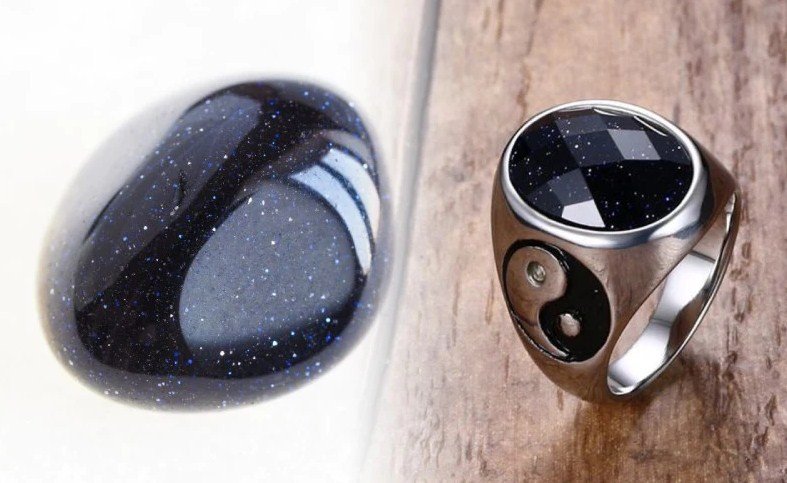Blue sandstone is a popular semi-precious stone used in jewellery, home decor, and spiritual practices. Its unique appearance and properties make it stand out among its peers, but many people wonder whether it is a natural stone or not. In this article, we will explore the origins of blue sandstone, how it is made, and whether it can be considered a natural stone.
What is blue sandstone?
Blue sandstone is a glittering gemstone that belongs to the feldspar mineral family. It is also known as blue goldstone or simply goldstone. The stone has a dark blue base with tiny metallic flecks that resemble stars.
This shimmering effect is created by adding copper and other metals to molten glass. The mixture is then cooled and polished to create the final product. Blue sandstone is not a mineral found in nature, but rather a human-made product.
How is blue sandstone made?
As mentioned earlier, blue sandstone is not a natural stone. It is created by adding copper and other metal oxides to melted glass. This mixture is then shaped, cooled, and polished to create the final product.
The addition of metal oxides gives the glass a crystalline structure, which causes the flecks to shimmer when light hits them. This process is carried out in a controlled environment to ensure consistency in the product.

Types of blue sandstone:
There are several types of blue sandstone available in the market today. The most popular ones include dark blue, light blue, and green-blue varieties. Each of these stones has a different appearance and uses. Dark blue sandstone is the most common type and is used in jewellery, home decor, and spiritual practices.
Light blue sandstone has a softer appearance and is used in meditation practices. Green-blue sandstone has a unique colour and is used for its healing properties.
Uses of blue sandstone:
Blue sandstone has been used for centuries in spiritual practices, primarily in the ancient Chinese culture. It is believed to have healing properties and is used for meditation, relaxation, and calming the mind. The stone is also used in jewellery and home decor due to its unique appearance and properties.
Blue sandstone jewellery is said to bring luck, prosperity, and abundance to the wearer. In home decor, blue sandstone is used as a decorative item to add a touch of glamour and sparkle to any room.
Is blue sandstone a natural stone?
In conclusion, blue sandstone is not a natural stone as it is created by adding metal oxides to molten glass. However, it is still a beautiful and unique semi-precious stone with many uses and benefits.
Whether you’re looking for a sparkling piece of jewellery or a decorative item for your home, blue sandstone is sure to impress. So now that you know the truth about blue sandstone, you can confidently use and enjoy this gorgeous stone in all its forms.
Conclusion:
In summary, blue sandstone is a semi-precious stone that is loved and cherished for its unique appearance and properties. While it is not a natural stone, it is crafted with care to ensure consistency in the final product.
Whether you’re using it for spiritual practices, jewellery, or home decor, blue sandstone is a versatile stone that can elevate any look or space. So go ahead and enjoy this beautiful stone, knowing that you now have the knowledge to impress others with your expertise!
FAQ
1. Is blue sandstone a natural stone?
No, blue sandstone is not a natural stone. It is a human-made product created by adding metal oxides to molten glass.
2. What minerals make up blue sandstone?
Blue sandstone belongs to the feldspar mineral family and is typically made up of a mixture of glass and metal oxides such as copper.
3. What are the healing properties of blue sandstone?
Blue sandstone is believed to have healing properties that can help with anxiety, depression, and negative energy. It is also said to promote mental clarity and creativity.
4. Can blue sandstone be used in meditation?
Yes, blue sandstone is often used in meditation practices as it is believed to promote relaxation and calmness of the mind.
5. Is blue sandstone a durable stone?
Yes, blue sandstone is a durable stone that can withstand everyday wear and tear. However, it is still important to take care of it properly, especially if using it in jewellery or home decor.
